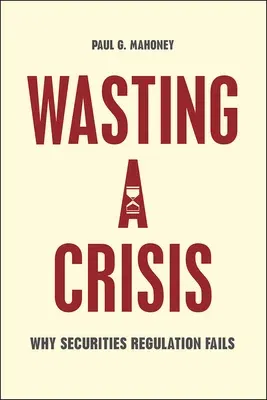The recent financial crisis led to sweeping reforms that inspired
countless references to the financial reforms of the New Deal.
Comparable to the reforms of the New Deal in both scope and scale, the
2,300-page Dodd-Frank Act of 2010--the main regulatory reform package
introduced in the United States--also shared with New Deal reforms the
assumption that the underlying cause of the crisis was misbehavior by
securities market participants, exacerbated by lax regulatory oversight.
With Wasting a Crisis, Paul G. Mahoney offers persuasive research to
show that this now almost universally accepted narrative of market
failure--broadly similar across financial crises--is formulated by
political actors hoping to deflect blame from prior policy errors.
Drawing on a cache of data, from congressional investigations,
litigation, regulatory reports, and filings to stock quotes from the
1920s and '30s*,* Mahoney moves beyond the received wisdom about the
financial reforms of the New Deal, showing that lax regulation was not a
substantial cause of the financial problems of the Great Depression. As
new regulations were formed around this narrative of market failure, not
only were the majority largely ineffective, they were also often
counterproductive, consolidating market share in the hands of leading
financial firms. An overview of twenty-first-century securities reforms
from the same analytic perspective, including Dodd-Frank and the
Sarbanes-Oxley Act of 2002, shows a similar pattern and suggests that
they too may offer little benefit to investors and some measurable harm.

